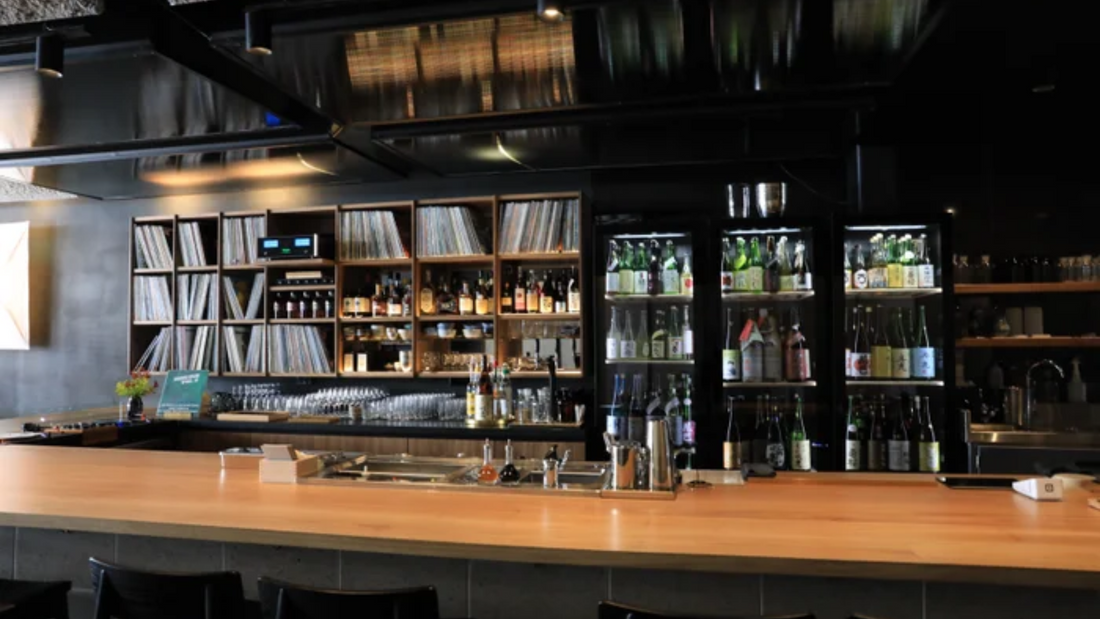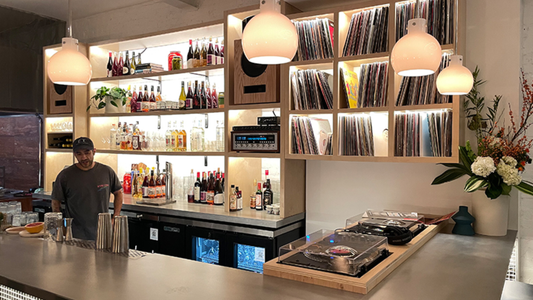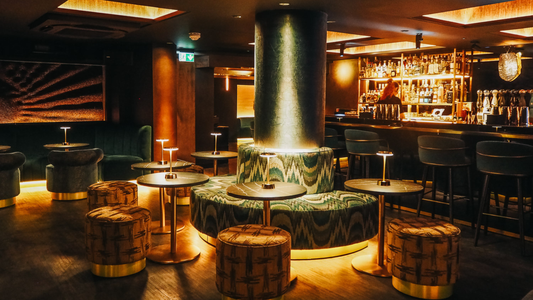
Salt on the Breeze, Jazz on the Needle: Australia’s Coastal Way of Listening
By Rafi Mercer
The first thing you notice is the air. Australia’s coastlines carry a freshness that lingers even inland, a salt tang that seeps into evenings and makes music sound different. Sydney harbours, Melbourne laneways, Perth terraces looking westward — all seem tuned by the sea. And lately, into that air, something quieter has taken root. Listening bars have begun to appear, drawing on the global lineage of Tokyo kissa and New York jazz clubs, yet shaped by the particular light and looseness of Australia. Salt on the breeze, jazz on the needle: a coastal way of listening is emerging.
Australia has long had a reputation for music that is loud, festival-shaped, sprawling across fields and beaches. Big days out, sweaty clubs, the crush of sound systems. But beneath that scale, there has always been another rhythm — smaller rooms, private gatherings, kitchens where a record spins while windows stay open to the ocean. The listening bar captures that intimacy and makes it public. It insists that a city like Sydney, known for spectacle, can also host silence. It proves that Melbourne, with its laneway bars and hidden doors, can embrace a slower ritual, where conversation softens and vinyl leads the night.
There is a natural affinity here. Vinyl as a medium is tactile, weathered, imperfect — like driftwood washed ashore, carrying stories from elsewhere. Jazz, too, has always thrived in coastal cities, travelling by ship, arriving in ports, carried by sailors and émigrés. Blue Note records that once echoed through New York basements found their way to Japanese pressings, then onto Australian turntables, where the needle traced grooves in rooms not far from the surf. To hear Coltrane while a southerly rolls in is to sense music and weather colliding — intensity in the room, salt on the air, both forces elemental.
What strikes me is how these bars feel less like imports and more like translations. In Tokyo, silence frames the sound; in Berlin, minimalism defines the room; in Paris, intimacy feels decadent. In Sydney or Melbourne, the atmosphere is lighter, touched by the coast. The doors are often open, air moving through, sound spilling gently rather than locked in. The discipline of listening is still there — phones dimmed, voices hushed — but it carries a different weight. Less stern, more ease. The ritual is no less serious, but it is softened by geography.
Vinyl sales in Australia reflect the global resurgence we’ve written about in The Business of Vinyl. Record stores in Fitzroy or Newtown report queues on release days, collectors swap Japanese editions in back rooms, younger listeners build shelves of LPs despite having grown up with Spotify. It is not nostalgia that drives them but hunger for presence. A record in the hand feels different from a stream in the air. And when played in a room where silence holds, that difference becomes revelation.
I remember sitting in a small bar in Melbourne, the system modest but tuned with care. The record was Miles Davis, Kind of Blue. Outside, a tram rattled by, and for a moment the sound of the city merged with the horn, the bass, the room itself. It struck me that this is what Australia adds to the listening bar culture — permeability. The salt, the breeze, the tram, the record: all in dialogue. Listening here is never sealed off. It is coastal, open, weathered by the elements.
There is something philosophical in this. In Silence is a Luxury, I argued that listening is defined as much by what we exclude as what we include. In Australia, the exclusion is partial. The sea always hums at the edge, the breeze always carries through. And rather than break the discipline, it deepens it. The music becomes a conversation not only with those present but with the environment itself. Jazz on the needle, salt on the air — a duet between human and elemental sound.
The coastal way of listening also shapes repertoire. Bars lean towards jazz, soul, ambient textures that feel porous, that allow space for air. A record by Bill Evans sounds different with windows open to a summer night in Sydney than it does in a sealed basement in Shibuya. The same track, another layer. Listeners notice this, return for it, seek it out. In time, it becomes memory — music tied to weather, records tied to place.
The global spread of listening bars proves something important: culture travels, but always bends to local conditions. Australia is not simply imitating Tokyo or New York; it is creating its own variation. And as vinyl continues its resurgence, as younger generations discover the weight of albums, these bars will matter more. They will anchor a culture that resists speed, that embraces detail, that makes space for patience in a world otherwise rushing past.
When I leave one of these rooms at night, the difference is palpable. The ear has been tuned in silence, the body stilled by ritual, the record has carved its groove in memory. Outside, the city hums, the ocean breathes, the salt carries. The listening does not end at the door; it lingers in the air. And that, perhaps, is the essence of Australia’s contribution to the movement: listening that feels coastal, open, alive with the elements.
Salt on the breeze, jazz on the needle. A culture of listening born global, lived local, shaped by the sea.
Rafi Mercer writes about the spaces where music matters. For more stories from Tracks & Tales, subscribe, or click here to read more.







